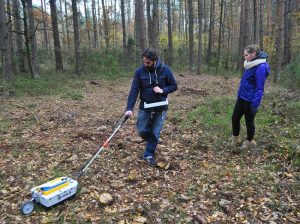Geodesists using non-invasive survey equipment carried out measurements at Treblinka, one of the German concentration camps from World War II in Poland. The Nazis levelled the are of the camp and planted it with lupin trying to conceal its secrets.

Geodesists from Politechnika Warszawska (Warsaw University of Technology) and Muzeum Walki i Męczeństwa in Treblinka (Museum of Struggle and Martyrdom) are trying to reveal the unknown secrets of Treblinka, using historic and recent spacial data, such as military photos from World War II and non-invasive methods. There were in fact two camps built by Germans there – Treblinka I being a labour camp and Treblinka II being the death camp. It turned out that there were many issues unsolved concerning both the camps, such as for example the area that the labour camp covered.

The latest project led by the geodesists aims at connecting the memories and testimonies of the witnesses with the newly acquired spacial data. Connecting such aspects like the length of the way the prisoners walked before being executed with analysis of the surrounding may result in reconstruction of routes, locations of buildings, gates and other structures. The researchers are using GPS measurements to locate the structures captured by archive air photos made in May of 1944 when the camp still existed. Non-invasive survey involved gravimetric and GPR (Ground Penetrating Radar) measurements at the site.

After the data was integrated the researchers were able to locate four places where mass graves could possible exist. Archaeological investigation allowed to verify the hypothesis and to secure the locations. Such analysis allowed also to identify previously unknown features of the camp, such as a railroad siding and a sorting building. The scientists are also involved in projects carried out other death camps – in Sobibór and Kraków Płaszów.
(after Politechnika Warszawska)